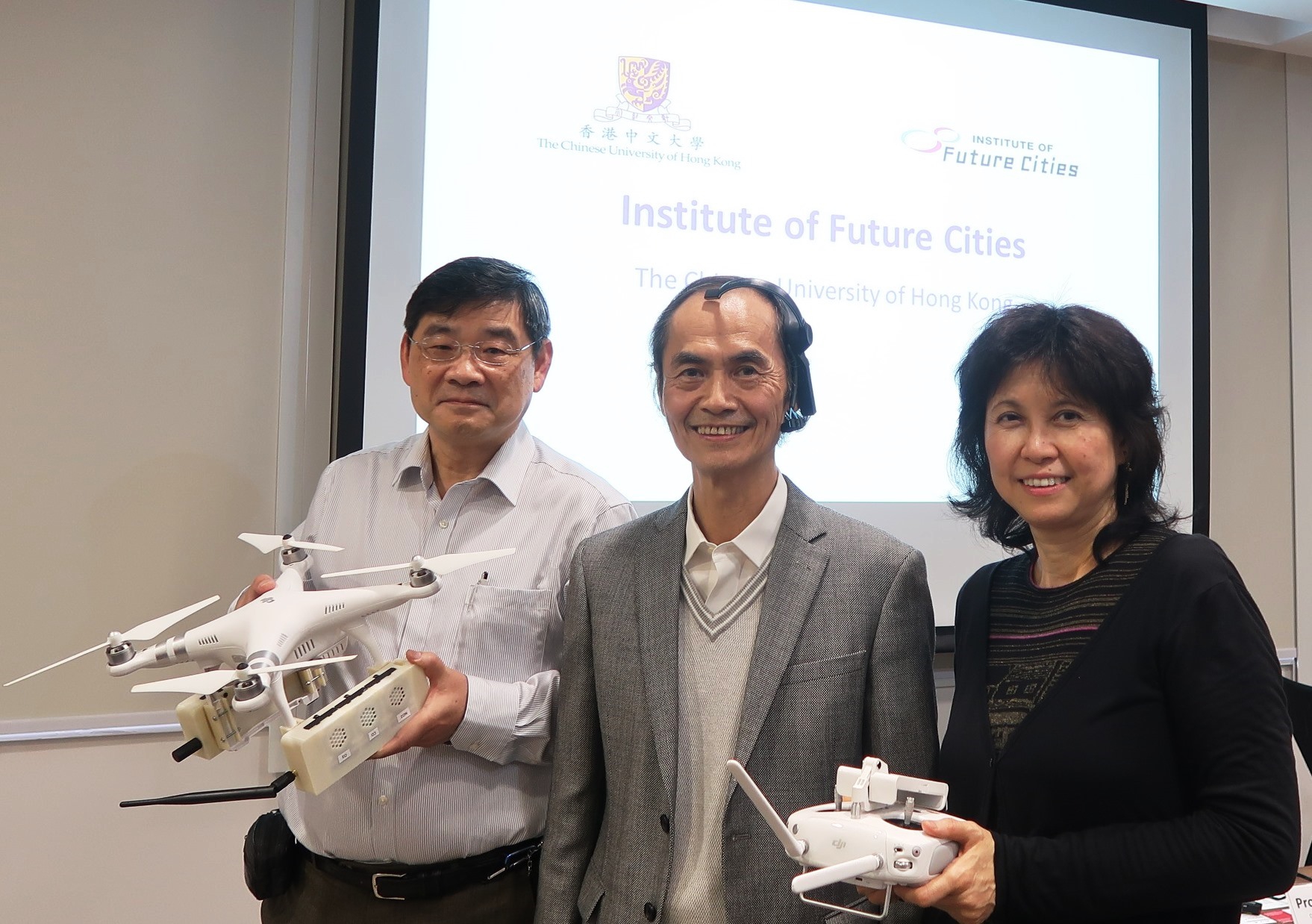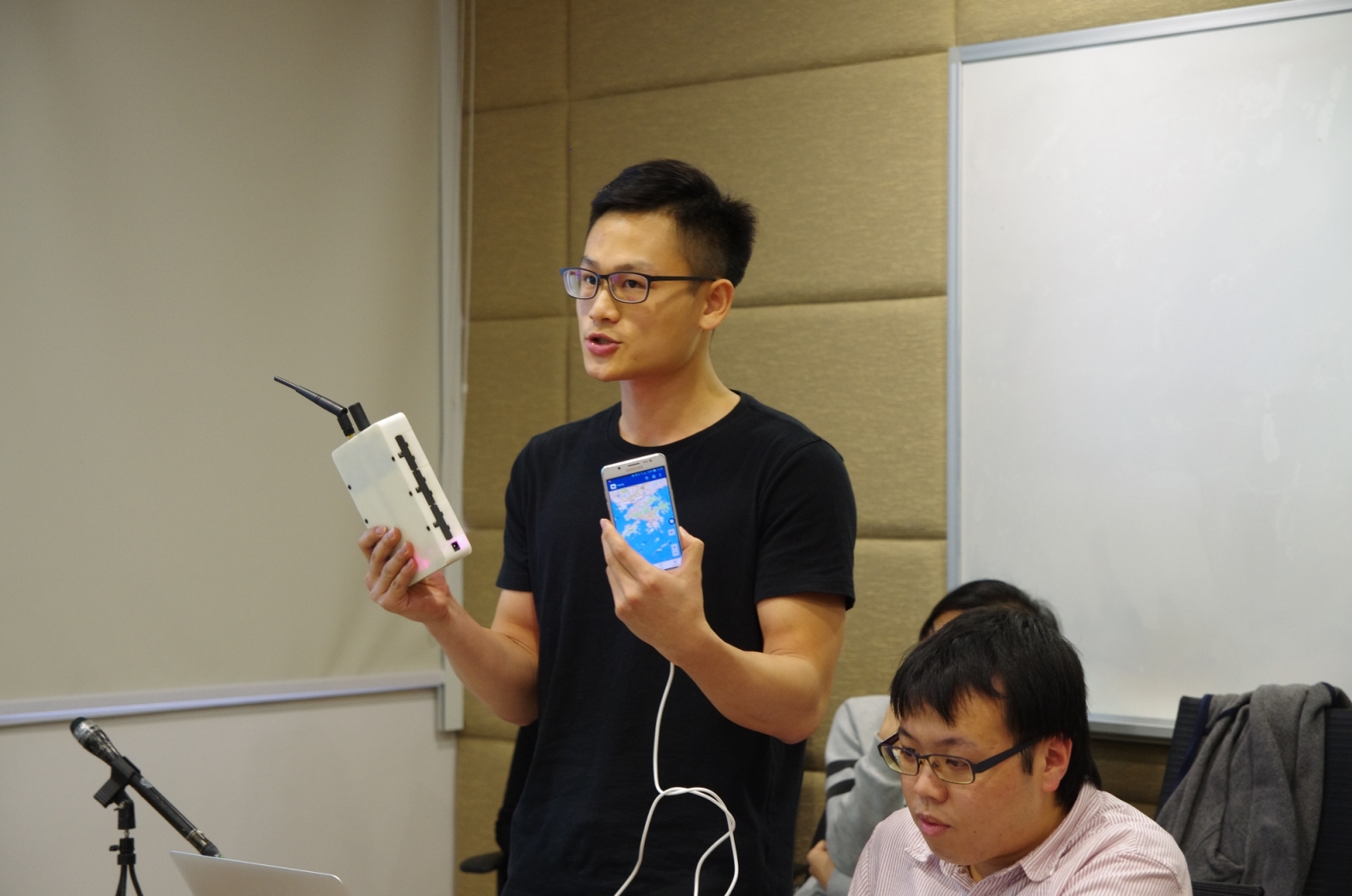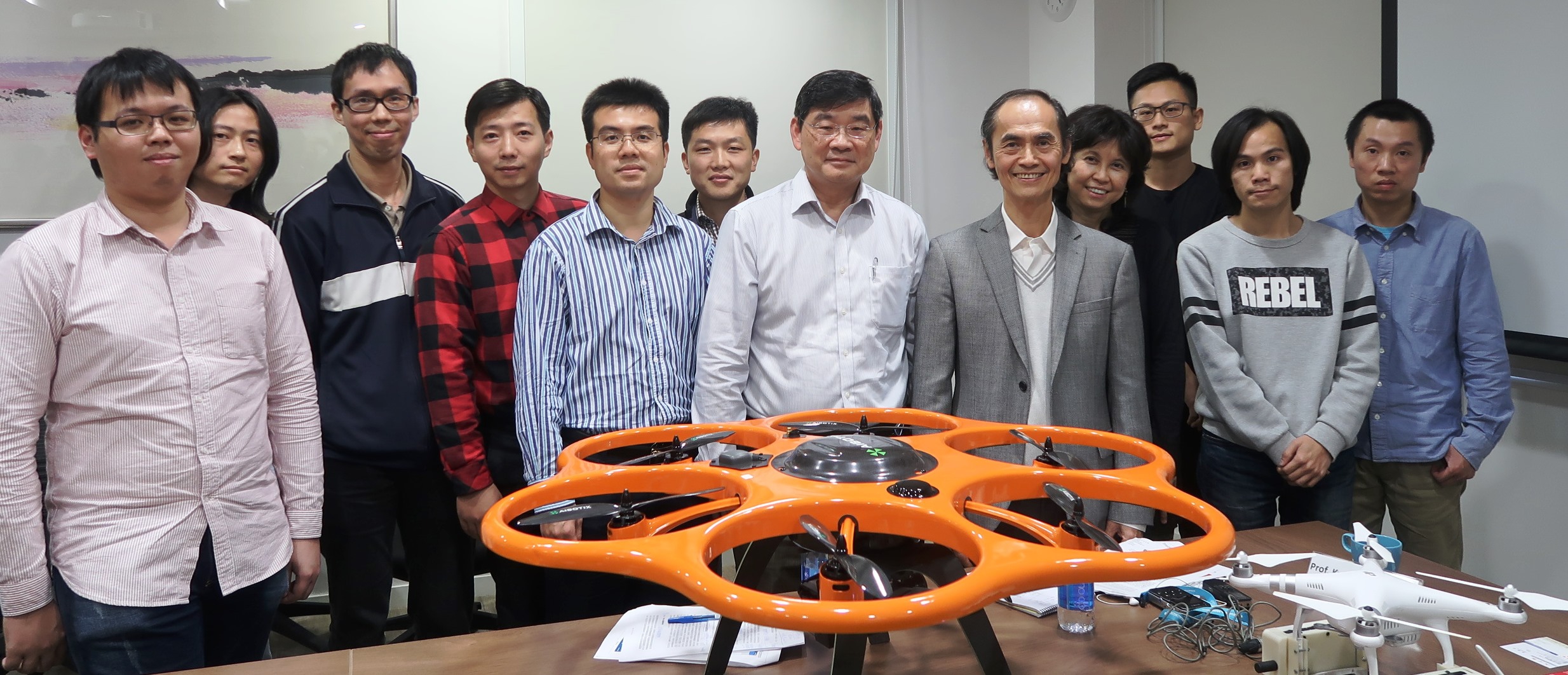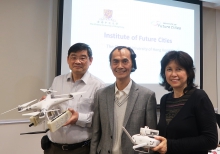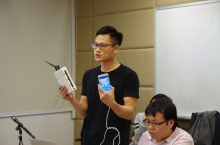CUHK
News Centre
CUHK Institute of Future Cities develops first local platformfor urban big data integration and analysisHelping Hong Kong to become a ‘Smart City’
With the exponential growth of the global population, problems arising from urbanisation are becoming more complex. In the 21st century, countries around the world are coping with the challenges by initiating policies which will establish smart cities, the Government of the Hong Kong Special Administrative Region has also been exploring the feasibility of developing Hong Kong into a smart city since 2015. To this purpose, The Chinese University of Hong Kong (CUHK) established the Institute of Future Cities (IOFC) in 2013, gathering researchers in a variety of fields to shape Hong Kong into a smart city of the future that is environmentally friendly, economically prosperous, socially just and sustainable. Recently, the Institute has developed the first platform in Hong Kong for integrating and analysing urban big data. Through the guidance of urban development theories, the use of innovative technology and intelligence software embedded in the platform, urban big data in a multimedia format can be collected, analysed and exchanged. This will help Hong Kong to become a smart city in the areas of personalized health monitoring, urban planning, air quality, social care and other fields.
According to the World Competitiveness Yearbook, Hong Kong has ranked first globally in technology infrastructure for five consecutive years. Hong Kong has the prerequisite for becoming a smart city in terms of hardware but in terms of software, a comprehensive platform for big data integration and analysis, open and big data are still lacking. So the IOFC developed the first local platform for integrating and analysing urban big data. The platform incorporates concepts of building the internet of things, internet of people, internet of community, internet of data and internet of services. It is currently under testing trials, and will be available on the market in the future. This platform will move Hong Kong closer to becoming a smart city and give light to the HKSAR government in developing its smart city blueprint.
Prof. Leung Yee, Director, IOFC, CUHK said ‘Hong Kong must take an innovative and cross-disciplinary approach to tackle the challenges of urbanization in the 21st century. Through the systematic analysis and enrichment of the links among men, objects and information, resources in Hong Kong can be utilized more efficiently. Hence, the people of Hong Kong can live a more convenient life, with their living standards improved and social developments fostered.’
He continued ‘It is generally believed that a city with developed information technology equates to being a smart city. However the IOFC thinks that, apart from advanced facilities in Information and Technology, a smart city requires a competent platform that collects open and big data meticulously, with integration and automated analysis done on the central system. Information can then be shared within the community and achieve a win-win situation with continuous growth of the economy and a rise in living standards for the people.’
Broad applications of the big data analysis and integration platform
The platform developed by IOFC consists of various unique yet related systems, with extensive applications including personal healthcare, medical care, urban planning, air quality, and social care.
1. Generic Interviewing System with Applications
To improve urban planning, it is essential to have a full grasp of the facilities, environment, culture, and community of the location to be studied. Therefore, an analysis with qualitative and quantitative components facilitates the authorities in formulating “people-oriented” urban planning with a thorough understanding of the background and needs of the district. The current system of questionnaires restricts researchers to collecting data that is beyond text format. This inadequately reflects the actual situation and thus limits the benefit of the data for urban planning.
The system that the IOFC is developing includes closed-ended and open-ended questions. Researchers are also allowed to collect information through multimedia such as photos, sounds and videos. They are able to design, upload/download and conduct the survey using the mobile application (APP) and the web interface. The system has been used in a project which collects multimedia weather comments and information which is applied to the Community Weather Information Network jointly hosted by IOFC, Hong Kong Observatory and Hong Kong Polytechnic University with over 100 secondary schools participating in collecting various kind of weather information in the community. The system also been used in projects for ‘place making’, in which large amounts of information are collected in the community to assist government and social stakeholders in planning the use of the urban and community spaces.
2. Wide coverage of an Air Pollution Decision Support System
Air pollution not only threatens people’s health, but is also an indicator of the sustainable development of a city. Currently, general air pollution monitoring relies on the statistics provided by the government in fixed locations. To better oversee air pollution, the IOFC has been developing an Air Pollution Decision Support System (APDSS) that processes data with different scale and source, including the latest plug-and-play format of the mobile sensors. Through the integration and analysis of the data collected by the ground-based stations of the Environmental Protection Department and the Hong Kong Observatory, and by social media, atmospheric-chemical-transport models, mobile sensors, and even remote sensors carried by drones, the government can observe the city’s air-pollution in real time and design policy for achieving sustainable urban development. Different indicators of air pollution can also be cross examined to ensure a comprehensive supervision and analysis of the air quality.
3. Personalized Health care
With the technological advancement of mobile devices, personalised healthcare for smart and healthy living has become more popular. But various wearable devices measure particular health indicators, restricting users in tracking their health conditions whenever and wherever possible. The system developed by the IOFC, can answer the demand for a personalised healthcare platform. Through the use of mobile applications, the health data from different sensors, such as smart watches, blood pressure sensors, heart rate sensors and ECG sensors can be collected. This data can be integrated, analysed, and viewed in one-stop. The data is uploaded to a server, and then physicians or fitness trainers can perform a basic analysis of a user’s health condition through the web platform. Advice on medical or training programmes can then be given. The system can also be connected with other devices, in which enables 24-hours monitoring.
4. Drug Discovery with smart software
The IOFC utilized its big data integration and analysis system to conduct computer aided drug discovery. This project has studied the drug repurposing of current approved drugs with the aim of combatting the mutations of the target protein that is responsible for the drug resistance in cancers. Through collecting the structures, the nature and the efficiency of different clinically tested drugs, analysis, comparison, matching and computer docking can be carried out, new repurposed drugs can be identified and ranked. Researchers are then able to sort out dozens of effective drugs for laboratory tests and clinical trials in the next phase. In comparison to the current procedures, where hundreds of drugs are tested in the laboratory before conducting clinical trials; this greatly shortens the time in creating new, yet personalised and suitable cancer drugs in target therapy. The research is now studying on the target mutants of different types of cancers, with the aim of developing target drugs for individual patients with different mutants.
5. Development of The Database and Access Port Tools in Urban Morphology for China
To facilitate study and analysis on the big data of urban climate, urban climate scientists around the world launched The World Urban Database and Access Port Tools (WUDAPT) initiative. Its purpose is to develop a detailed, open access, urban database for all major cities in the world to collect data such as building density and energy demands of a city, with the aim of applying it to planning for climate resilience, energy modeling, greenhouse gas assessment and other areas. WUDAPT also describes the physical geography of cities by capturing information on urban form (e.g. building density) and function (e.g. energy demand) at a suitable scale for urban climate studies and modelling. IOFC has developed local climate zone mapping work for 58 cities and regions in China and developed an innovative advanced technology and method to detect 3-dimension information about urban morphology. Several on-going international collaborations are exploring various applications of WUDAPT data in different aspects of sustainable urban development in China; for example, Eco-city’s performance evaluation and planning for Jing-Jin-Ji region, Haze/dust events in the Yangzi River Delta Region, Urban Heat Island and Extreme Heat events in the Pearl River Delta Region.
IOFC often exchanges insights and research in developing a sustainable smart city with well-known foreign scholars. IOFC will hold the Croucher Advanced Study Institute 2016-2017 on ‘Integration of Urban Science and Urban Informatics for Smart Cities’ from 10-12 January, 2017, with top-rank researchers on urban science and urban informatics from University College London, Massachusetts Institute of Technology, the Swiss Federal Institute of Technology in Zürich and others as keynote speakers.
For more information about the Croucher Advanced Study Institute 2016-2017, please visit the conference website: http://iofc.cuhk.edu.hk/news-events/conference-workshop/302-croucher_asi_2017.html
Institute of Future Cities of CUHK
IOFC consists of four Centres and one programme. They are the Centre of Community and Place Governance, the Centre of Land Resource and Housing Policy, the Centre of Urban Sustainability, the Centre of Urban History, Culture and Media and the Urban Informatics Programme.
The vision of IOFC is to develop into an institute of excellence, a leading multi-disciplinary research institute carrying out impactful research on urban theories and practices covering policy, plans and design especially for Hong Kong, mainland China and Asia. IOFC aims to play a key networking role between the international urban research communities and those in Asia.
Prof. Leung Yee, Director of IOFC in CUHK (middle), Prof. Leung Kwong-sak (left) and Prof. Ng Mee Kam (right), Associate Directors of IOFC in CUHK


